America’s Next Top Monster
“He [Edward Hyde] is not easy to describe. There is something wrong with his appearance; something displeasing, something downright detestable. I never saw a man I so disliked, and yet I scarce know why. He must be deformed somewhere; he gives a strong feeling of deformity, although I couldn’t specify the point. He’s an extraordinary-looking man, and yet I really can name nothing out of the way. No, sir; I can make no hand of it; I can’t describe him. And it’s not want of memory; for I declare I can see him this moment.”
– The Strange Case of Dr. Jekyll and Mr. Hyde
Monsters have been around since the dawn of human civilization and appear across all cultures. They are under our beds, hiding in our closets and scratching at our windows. They climb from the shadows of our stories and comfortably occupy pop culture, cautioning readers and viewers about what happens if one doesn’t follow the status quo.
The term “monster” has been attributed to the Latin word “monere” which means “to warn” according to Oxford Dictionary. Monsters are more than just creatures designed to scare young children; they act as tools to instill lessons, values and instructions on proper behavior. In Western myths, monsters were a disruption of the natural order and could be brought about from taboo unions or from disrespecting the gods. Medieval monsters taught people what happens when one throws aside religious doctrines and sides with the Devil.
Monsters have also been aligned with fear of ambiguity. The fear of the unknown has always compelled mankind to write “Here Be Monsters” in remote waters all over maps. Some monsters stayed closer to home – in dark forests and creepy caves surrounding villages. Many stories were specifically designed with the purpose of warning people against going to unfamiliar places. J. Halberstam, a professor at USC, wrote on the subject of Gothic monsters: “Within the traits that make a body monstrous – that is, frightening or ugly, abnormal or disgusting – we may read the difference between a foreigner and a native” (8). The disfiguration of monsters often acted as a hyperbole of the different and the strange to highlight the dangers of a foreign presence.
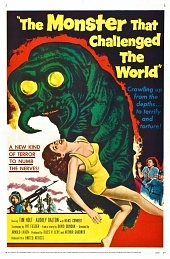
The Evolution of the Monster
Monster behavior can be explained by Freud’s Id theory. The Id is the “pleasure principle” while the latter components of one’s overall personality, the Ego and Superego, provide moral standards and the socially constructed ideas about right and wrong. The Id is most concerned with satisfying primal urges and desires with little concern over the consequences (Freud, 5). Therefore, it is not surprising that the Id is considered the devil of personalities – the tiny voice in one’s head that fuels their desires. Since biblical times, monsters have all been aligned with the Id and it’s what unites these creatures throughout history.
Many medieval monsters such as vampires, witches, and werewolves are some of the most well-known monsters in Western pop culture. The vampire, for instance, is a beast who succumbs to selfish desires and demonstrates the dangers of seduction and sexual deviancy. Then there are witches who sign contracts with the Devil and have hideous exteriors that match their evil intentions to cause harm. Lastly there are the werewolves – men that lose their humanity in exchange for a beastly form.
In this day and age, however, can they be considered monsters anymore? Shows such as Teen Wolf, Vampire Diaries, and the Witches of East End suggest otherwise. These “monsters” are celebrated; they are protagonists and love interests. People idolize their strength and feel for their suffering. Books, movies, and television shows have made people intimate with these creatures, they are no longer social outcasts but popular and desirable figures.
Fangs, disfiguration, and general supernatural features aren’t enough to make a monster anymore, so what’s next? Modern society has begun to move towards something more devious – the monster within. This has come along with the growth of cities and the rising popularity of the Internet. When people still lived in villages, everyone knew each other and it was easier to exclude foreign threats. The growing population have made the close-knit values of a community difficult to maintain. Not to mention how hard it is to know everyone when one lives in a place like New York City with a population of over 8 million. Today, it is easier to become anonymous and blend in with the crowd. Anonymity rests with ambiguity. Monsters travel with crowds and fangs are now more easily concealed than ever, and it has become challenging to separate a monster from the average person. Now, it is the monster that hides under their skin that one must be aware of. In other words, “The Monster Within” trope has brought back the ambiguity today’s monsters desperately need.
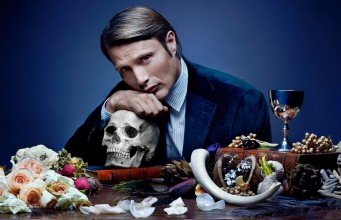
The Monster Within
By the 19th century, Gothic novels and stories, like The Strange Case of Dr. Jekyll and Mr. Hyde, began hinting at the rise of this new trope. In his study, Halberstam observes: “Monsters within postmodernism are already inside – the house, the head, the skin, the nation – and they work their way out” (162).
This quote concludes with the idea that monsters have become more and more commonplace and have become an almost integral part of modern society. The monster within doesn’t just rest in one’s head – it manages to affect other aspects of their lives, their family, and their friends. The trope, however, has shown similar characteristics to the monsters in old fairy tales. Whether the monster is a giant ogre or a decrepit witch, each character is focused on pursuing goals that directly harm others.
The monster within is defined by one’s unassuming exterior in contrast to the evil lurking beneath. Hannibal Lecter from the NBC show Hannibal is a good example of appearance versus reality. At first glance, viewers are shown a helpful psychologist who only wants what’s best for his patients. As the show progresses, the viewers are treated to Hannibal’s need to manipulate, take advantage, and even murder the people who had trusted him. Similar to Dracula’s obsession over Mina, Hannibal is guided by self-interest to satisfy his personal desires through whatever means necessary. After committing his heinous crimes, Hannibal returns to society under the guise of the average passerby. Blending into crowds and social groups are important aspects to this trope, for they add to the haunting quality these contemporary monsters possess.
Anyone Can Be a Monster
Since being a monster no longer requires leathery wings or talons, it seems as if anyone can be a monster if they really wanted to. However, in most cases, it is an undesirable side effect that can be shaped by one’s environment. The idea that an individual has little to no control over their surroundings highlights an element of chaos shared by the monsters in stories. Just as victims lack power to ward off the beast stalking them, so do the people harboring such monsters inside of them. It is Dexter who must feed the beast that has accompanied him since childhood by indulging in murdering criminals lest he turns that hunger towards his family and friends. It is Norman Bates, emotionally abused by his mother, expressing his subsequent monstrous traits onto unsuspecting strangers.
The new monster doesn’t require to be born hideous but can rather acquire such hideous qualities through life experiences. Take Walter White from Breaking Bad – he is just a sick man who wants to find a way to secure his family’s financial future regardless of what it takes. His motives are initially altruistic; his career in drugs forces him to make immoral decisions for the sake of self-preservation. Throughout the show, Walter’s decisions slowly become less concerned for the good of his family and more about money and power.
Shows like Breaking Bad and Bates Motel give viewers insight into each protagonist’s monstrous conception, while also retaining the viewer’s empathy throughout each season. By identifying with the characters’ struggles and feelings of isolation, the viewers discover subtle and obvious similarities with them. In Bates Motel, Norman finds himself dealing with a new home, a new school, and the pressure to be the perfect child for his mother. Like a phoenix rising from the ashes, Norman’s situation gives way to his neurotic and violent behavior. Though less dramatic, the average person can understand the frustration and confusion that comes from his circumstances.
Nowadays, people rarely get the time to step back and reflect on their own lives. How much of an individual’s identity is shaped by the expectations of the people around them? Is it simply luck that allows people to grow up with empathy and respect for human life? How much power do people hold over their personal demons? These questions all build up to finding a monster that may be a lot closer than one might think. Instead of looking under the bed, perhaps one should take a look at what lurks under their covers.
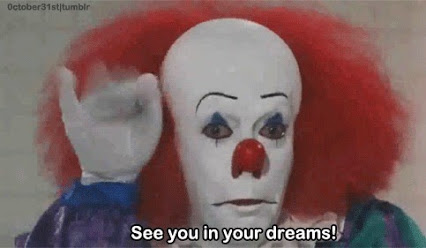
Works Cited
Halberstam, Judith. Skin Shows: Gothic Horror and the Technology of Monsters. Durham: Duke UP, 1995. Print.
Freud, Sigmund, and Princess Marie Bonaparte. The origins of psychoanalysis. Imago, 1954.
What do you think? Leave a comment.
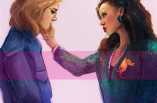
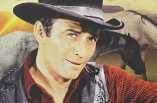
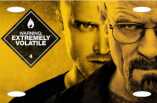
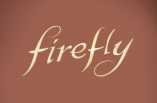
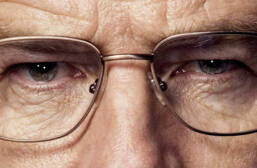
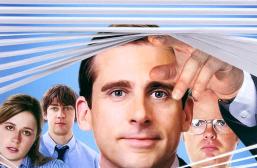
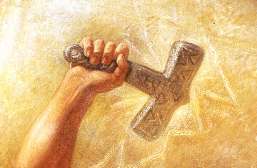
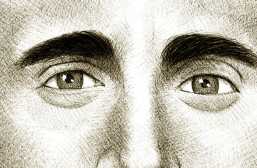

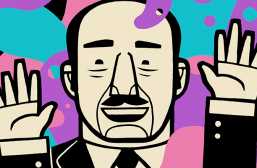
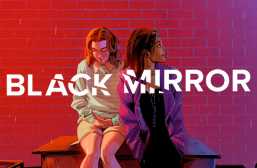
A set of complex, morally ambiguous characters who compel us to relate to them despite their often troubled nature and gaping collection of character flaws.
For me, Dexter is the best protagonist befitting this title in recent times.
Two obvious ones are The Shield’s Vic Mackey, and more interestingly, Walter White from Breaking Bad.
I find it hard to sympathise with Mackey, but I’ll cheer on Walter all the way.
How can we not rejoice in the chaotic beauty that was the character Detective Victor Samuel ‘Vic” Mackey.
If ever there was a master of the morally flexible, a power-manipulating machiavellian, a connoisseur of crisis-management, a cash hungry, hooker-caring, cop whacking, door crashing, super snarling, mega conflicted Uber Bastard of a ‘PO-Lease’ officer, surely ”tis he.
I’ll never forget the ending of the first episode of the the first season of The Shield, Jesus H ‘Tap Dancing’ Christ it was dramatic.
I’m obsessed with monsters and the monstrous. This is a really interesting article! I’m particularly interested in monsters and ambiguity. Monsters smash the myth of certainty and I think ambiguity (especially moral) might be the overarching theme in the portrayal of human monsters in pop culture today as you’ve illustrated with characters like Walter White and Hannibal.
Nicely done. I really think that the moniker of monster is shifting towards the aberrant human. We have done a lot with the ancient/medieval monsters and changed a lot of the morality that surrounds them. Now we have moved on to question the intentions of humans and their actions.
I really agree with you there are many nice and kind people in this world, but it is becoming more so that people are becoming greedy and like you said become monsters.
Excellent article. You provided a lot of examples from current television series to explain how monsters evolved in story telling. I find it interesting that it’s always the attractive characters that end up being the monsters, because their good looks makes it easier to deceive others.
The incredible Walter White.
I vote for Peter Griffin – from Family Guy – every day of the week. He is much more morally vacuous than the “we all learnt a valuable lesson today” Simpsons.
Patty Hewes- the motherload bitch with the cold-as-ice eyes in the long lived Damages fits this category.
Dexter could never of happened without Brett Easton Ellis’s Patrick Bateman.
Patrick Bateman is a masterfull creation unsurpassed – as long as you ignore the awfully lame film.
House MD.
Foreman, MD.
Interesting. Are monsters in televsion actually just portrayals of people that actually show some character defects? (like everyone in the world).
Very awesome piece! I would like to point out though that the monsters of fairy tails were actually intended to represent real people. The wolf in Red Riding Hood was meant to represent common men to young girls where the huntsmen represented the ideal man who is safe and boring… the point of the tail was cautionary in concerns with virginity and purity…
I was very much hoping to hear a comparison to reality TV stars but ehh… I can dream… maybe I’ll write about it!
I’d nominate Alan Shore of Boston Legal. Sure he softened, as all monsters, but he started life as a smug loathsome corrupt vicious womaniser with no redeeming features at all save that he was more fun than the po-faced characters around him.
A small point about Breaking Bad – I am of the opinion that Walter White’s monstrous flaws were with him from the Grey Matter days. i.e. Walter White was always a terrible person, it just took his illness to make him not so cowardly and act on it.
I thought this piece was very interesting in how the idea of monsters have changed so much over the years, especially in pop culture. I, myself, have been working on piece in which I researched real like serial killers as monsters and how audiences portray them that way. It’s really the thrill that people get out of it that keeps these ideas of monsters alive.
This article brings up the whole nature vs. nurture argument which I believe has a valid place in connection to modern day monsters. Nowadays, pop culture monsters either give into their nature or abide by the nurture given to them as children. It is the same question that people ask about psychopaths – are they born that way or does their upbringing play a major role in their state of mind? In fact, psychopaths and others like them could be considered the real modern day monsters.
Interesting take on an intriguing subject for discussion and awesome observations. Great job!
Interesting. I do to agree with how monsters no longer need to having scary looking attributes. Their personality and what they do can now be considered scary and horror filled. While reading this I also thought of Dexter and was surprised when I read the same example in the text. I personally think modern day monsters are scarier than than ones like Frankenstien.
As Chris R. said, modern day monsters are scarier than obvious ones precisely because they are harder to identify and defeat. I think that this may be why shows such as the Walking Dead, Buffy, etc. are popular, because it puts the evil monster back into a form that we can defeat and kill – something that is much harder to do in real life. Although there are monsterous humans in those shows, we can treat them the same way as the zombies because of the post-apocolyptic world setting.
Great job connecting the more “visible” monsters to the “monster within” theme both in Gothic literature and more contemporary media. The monsters who can hide and assume “normalcy” are perhaps the scariest of all because they make us uneasy without showing us when or if we need to prepare for the threat.
interesting depiction of what “monsters” can be!